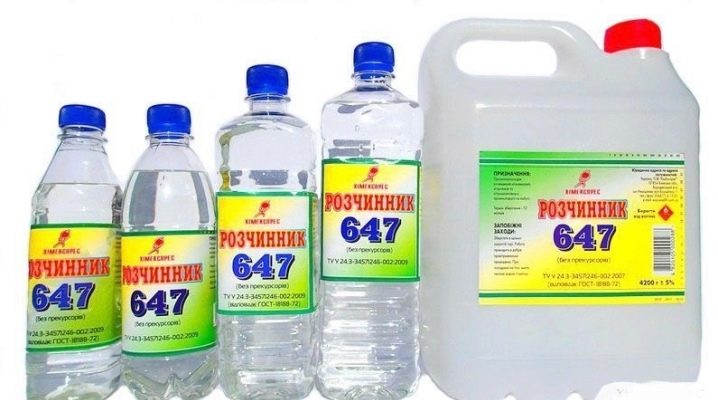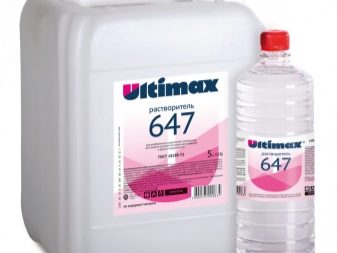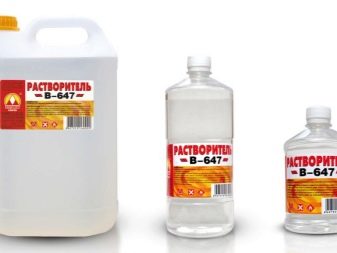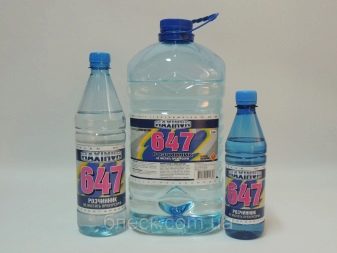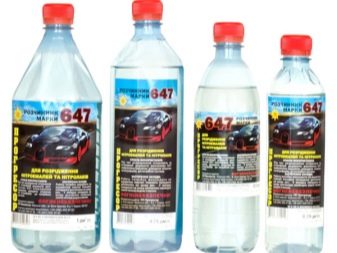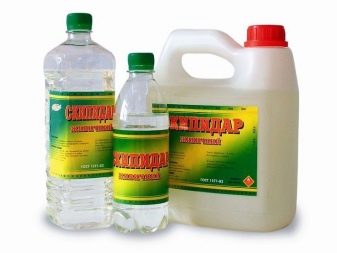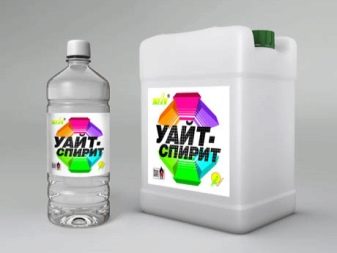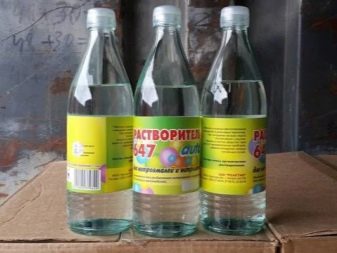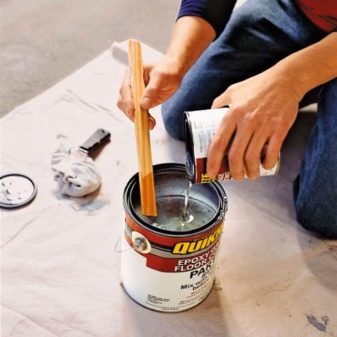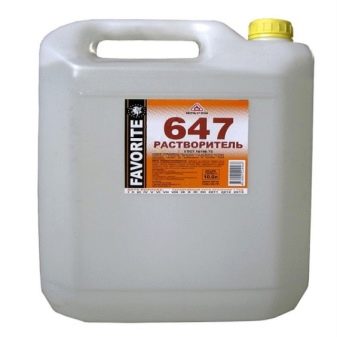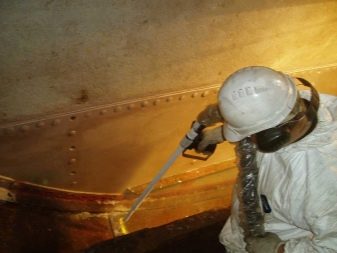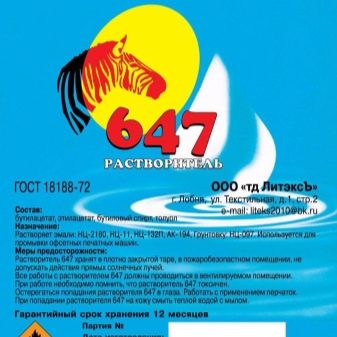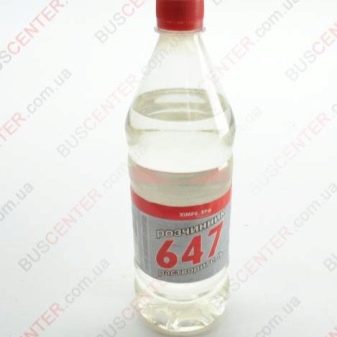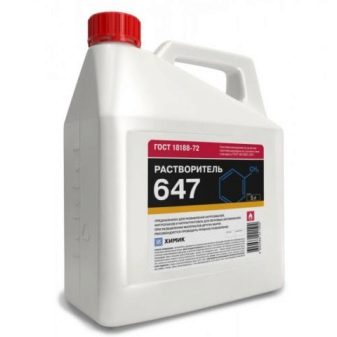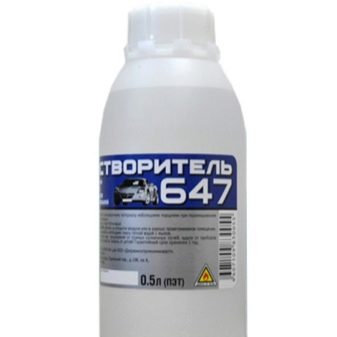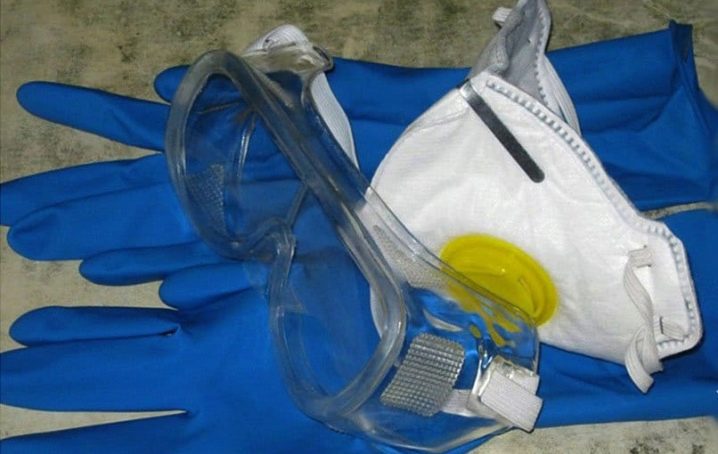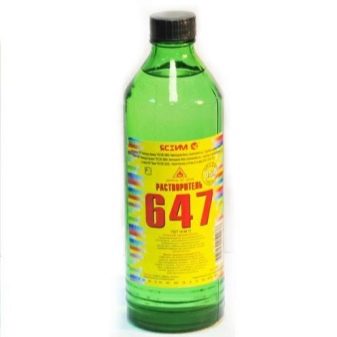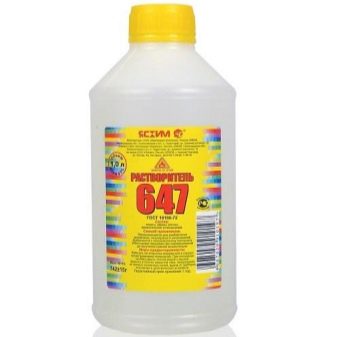Solvent 647: composition characteristics
The solvent is a specific volatile liquid composition, which is based on organic or inorganic components. Depending on the characteristics of a particular solvent, it is used to add to coloring or varnishing materials. Also, solvent formulations are used to remove stains from paints and varnishes or dissolve chemical contaminants on various surfaces.
Special features
The solvent can be made on the basis of one or more components. Recently, multicomponent compositions have become most popular.
Usually solvents (thinners) are available in liquid form. Their main characteristics are:
- appearance (color, structure, consistency of the composition);
- the ratio of water to the number of other components;
- the density of the liquid solution;
- volatility (evaporation);
- degree of toxicity;
- acidity;
- coagulation number;
- the ratio of organic and inorganic components;
- flammability.
Solvent compositions are widely used in various industries (including chemical), as well as in engineering. In addition, they are used in the manufacture of footwear and leather goods, in medical, scientific and manufacturing industries.
Types of formulations
Depending on the specifics of the work and the type of surface on which the solvent will be applied, Formulations are divided into several major groups.
- Thinners for oil paints. These are mildly aggressive formulations that are used to add to coloring materials in order to improve their properties. Most often, turpentine, gasoline, and white spirit are used for these purposes.
- The compositions intended for cultivation of bituminous paints and the painting materials on a glyptal basis (xylene, solvent).
- Solvents for perchlorovinyl paints. Acetone is most often used to dilute this type of color.
- Thinners for paints on glue and water-dispersion basis.
- Weak solvent formulations for domestic use.
Features of the composition of the P-647
The most popular and widely used for various types of work at the moment are thinners P-647 and P-646. These solvents are very similar in composition and similar in properties. In addition, they are among the most affordable.
Solvent Р-647 is considered less aggressive and gentle for surfaces and materials. (due to the absence of acetone in the composition).
Its use is advisable in cases where you need a more gentle and gentle effect on the surface.
Often the composition of this brand is used for various types of body work and for painting cars.
Application area
R-647 does well with the task of increasing the viscosity of substances and materials that contain the substance nitrocellulose.
Solvent 647 does not damage surfaces that are poorly resistant to chemical attackincluding plastic. Due to this quality, it can be used for degreasing, removing marks and stains from paintwork compositions (after evaporation of the composition, the film does not become white, and scratches and roughness on the surface are noticeably smoothed) and used for a wide range of works.
Also, the solvent can be used to dilute nitro enamels and nitrolak. When applied to paints and varnishes, the solution must be constantly stirred, and the direct mixing procedure must be carried out strictly in the proportions indicated in the instructions. The thinner Р-647 is most often used with the following brands of paints and varnishes: НЦ-280, АК-194, НЦ-132П, НЦ-11.
P-647 can be used in households (subject to all precautions).
Technical properties and characteristics of the solvent composition of the brand Р-647 according to GOST 18188-72:
- The appearance of the solution. The composition looks like a clear liquid with a homogeneous structure without impurities, inclusions or sediment. Sometimes the solution may have a slight yellowish tint.
- The percentage of water content is not more than 0.6.
- The volatility of the composition: 8-12.
- Acidity is not higher than 0.06 mg KOH per 1 g.
- Coagulation rate is 60%.
- The density of this solvent composition is 0, 87 g / cm. cc
- The ignition temperature is 424 degrees Celsius.
Solvent 647 contains in its composition:
- butyl acetate (29.8%);
- butyl alcohol (7.7%);
- ethyl acetate (21.2%);
- toluene (41.3%).
Safety and precautions
The solvent is an unsafe substance and can have a negative impact on the human body. While working with him it is important to observe measures of caution and safety.
- The composition should be stored in a tightly closed fully sealed container away from fire and heating devices. It is also necessary to avoid exposure to a container with a thinner of direct rays of the sun.
- The solvent composition, like other household chemicals, must be safely hidden and inaccessible to children or animals.
- Inhalation of concentrated solvent vapors is very dangerous and may cause poisoning. In the room where paint work or surface treatment is carried out, forced ventilation or intensive ventilation should be provided.
- Do not allow the solvent to enter the eyes or open skin. Works need to be carried out in protective rubber gloves. If the thinner still gets into exposed areas of the body, it is necessary to immediately wash the skin with plenty of water using soap or weakly alkaline solutions.
- Inhalation of high concentration vapor may damage the nervous system, hematopoietic organs, liver, gastrointestinal system, kidneys, mucous membranes.The substance is able to get into the organs and systems not only through direct inhalation of vapors, but also through the pores of the skin.
- In case of prolonged contact with the skin and lack of timely washing, the solvent can damage the epidermis and cause reactive dermatitis.
- The composition of P-647 forms explosive flammable peroxides, if it is mixed with oxidizing agents. Therefore, contact of the solvent with nitric or acetic acid, hydrogen peroxide, and strong chemical and acidic compounds should not be allowed.
- Contact of the solution with chloroform and bromoform is flammable and explosive.
- Spraying of the solvent should be avoided, since in this case a dangerous degree of air pollution is reached very quickly. When spraying the composition may ignite the solution even at a distance from the fire.
It is possible to buy solvent of the P-647 brand in shops of building materials or in the specialized markets. For domestic use, the solvent is packaged in plastic bottles from 0.5 liters. For use on a production scale, packaging is performed in cans with a volume of 1 to 10 liters or in large steel barrels.
The price of a solvent brand P-647 on average is about 60 rubles. for 1 l.
Comparison of solvents 646 and 647, see the following video.
